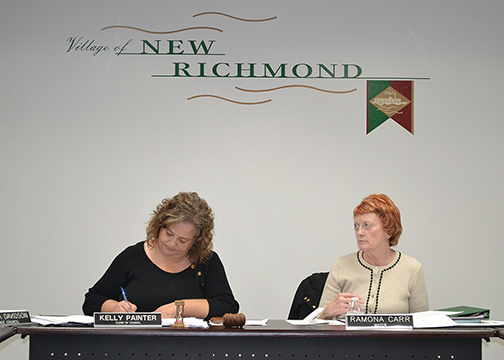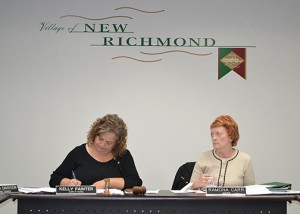

Sun staff
Village of New Richmond officials are going back to the drawing board after the electorate recently voted down an income tax increase that would have helped fund the New Richmond Fire and Emergency Services Department and the New Richmond Police Department.
Currently, the village imposes a 1 percent earnings tax on people who live or work in the village; residents who pay taxes to other municipalities are given a 0.5 percent tax credit. Council passed the current earnings tax in late 2009, but an increase beyond the 1 percent has to be approved by voters.
The tax hike, which the council unanimously agreed to put on the November 8 ballot, would have increased the earnings tax to 2 percent and maintained the 0.5 percent tax credit.
The current earnings tax generates approximately $500,000 per year. An increase to 2 percent would have generated another $500,000, which would have been equally split between the fire and EMS department and the police department.
The tax increase was defeated 750 to 373, according to unofficial results from the Clermont County Board of Elections.
One issue presented by the lack of funding is that police department’s December staffing schedule, which was developed and submitted by Randy Harvey, police chief, shows a reduction in officer coverage, including no coverage during one four-hour period each day.
“I tweaked it so we could cover the peak hours, but every day in December we’ll not have any coverage during [those four hours],” Harvey explained, adding, “We are opening those four hours a day up to overtime; either [one] shift will hang over or [another] shift will come early. We’re trying to work through that.”
During the council’s meeting on Nov. 22, Mayor Ramona Carr prompted the councilmembers to begin thinking about alternative solutions to the tax increase.
She spearheaded the effort and presented her plan to form several Citizens Task Forces that will be made up of volunteer residents, business leaders and village government representatives; the task forces will make recommendations to council.
The proposed task forces are Safety Services, which includes police and fire and EMS, Entertainment District and Ohio River Bike Trail.
“I think for the safety services issue we have, it’s going to take getting village residents involved and trying to educate them so they can educate the rest of the public,” Carr said.
A description of the plan and a call for task force volunteers is set to appear in the village’s December newsletter.
The council went on to discus a strategy for running the tax increase, again, in an upcoming election.
The council would need to approve putting the tax increase before voters 90 days before any such election, according to Greg Roberts, village administrator.
“I just think that we have to do a better job of getting the word out,” Carr added.
The councilmembers went on discuss reasons why the tax increase failed, including hearsay throughout the community about the municipality’s “wasteful spending.”
“I haven’t seen it, so if they could just tell me what it is that we’re wasting our money on, I would love to know, because I think we’d all like to cut it out,” Mary Allen, councilwoman, said.
Paul Vanderbosch, councilman, responded, “I don’t think the solution is cutting expenses, I think the solution is increasing revenue.”
He added, “There’s not enough pain yet; we keep saying, ‘We’re running out of money, we’re running out of money,’ but we still have the police and fire departments.”
Allen went on to share her take on the lack of funding and the resulting cut in police coverage.
“The reality is, if we don’t get any more money, which we have no money planned, we’re going to probably have to cut anyway, so we might as well get used to having these four-hour periods here and there where we don’t have coverage,” she said. “I mean – that’s just our new reality.”
